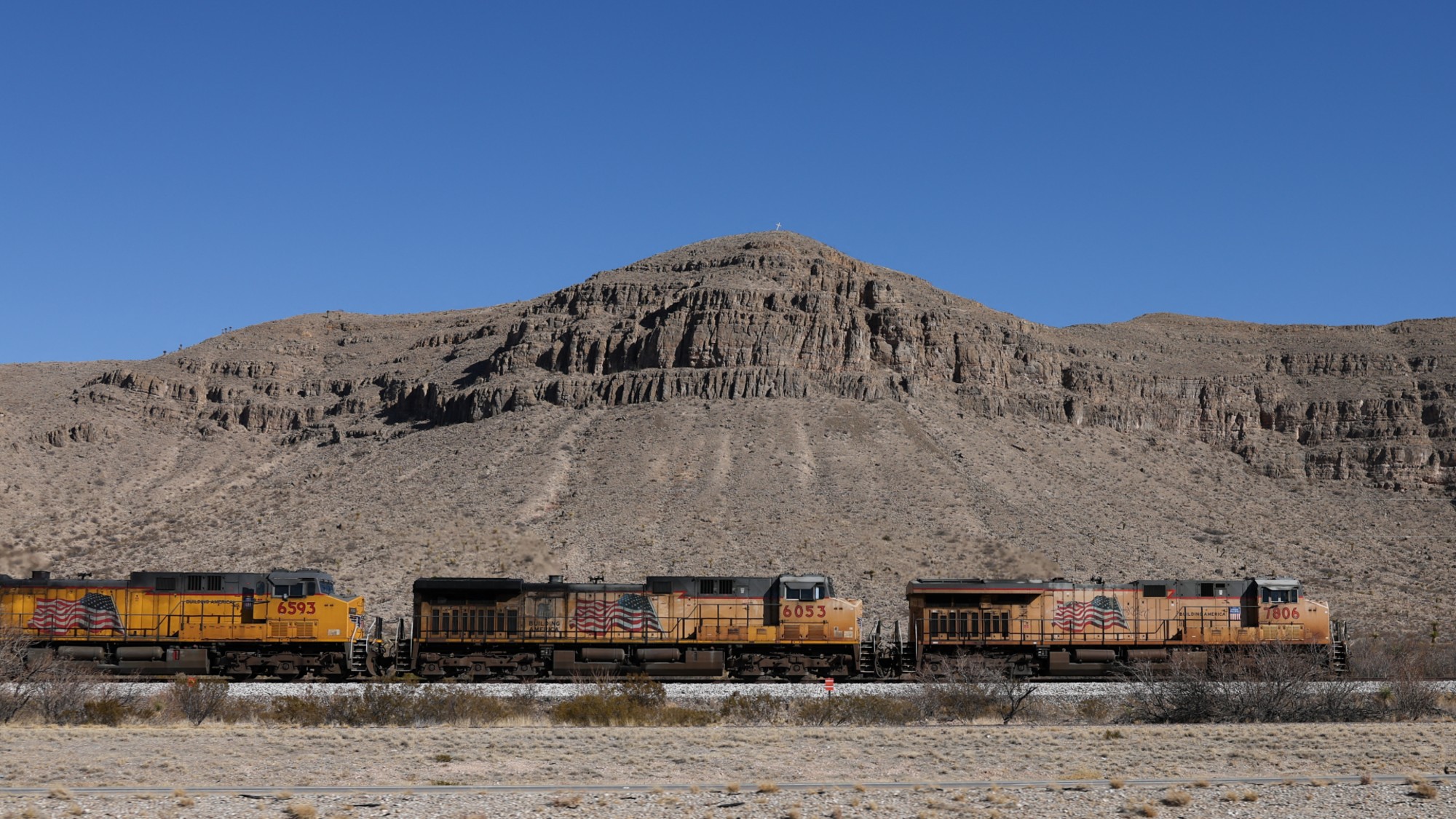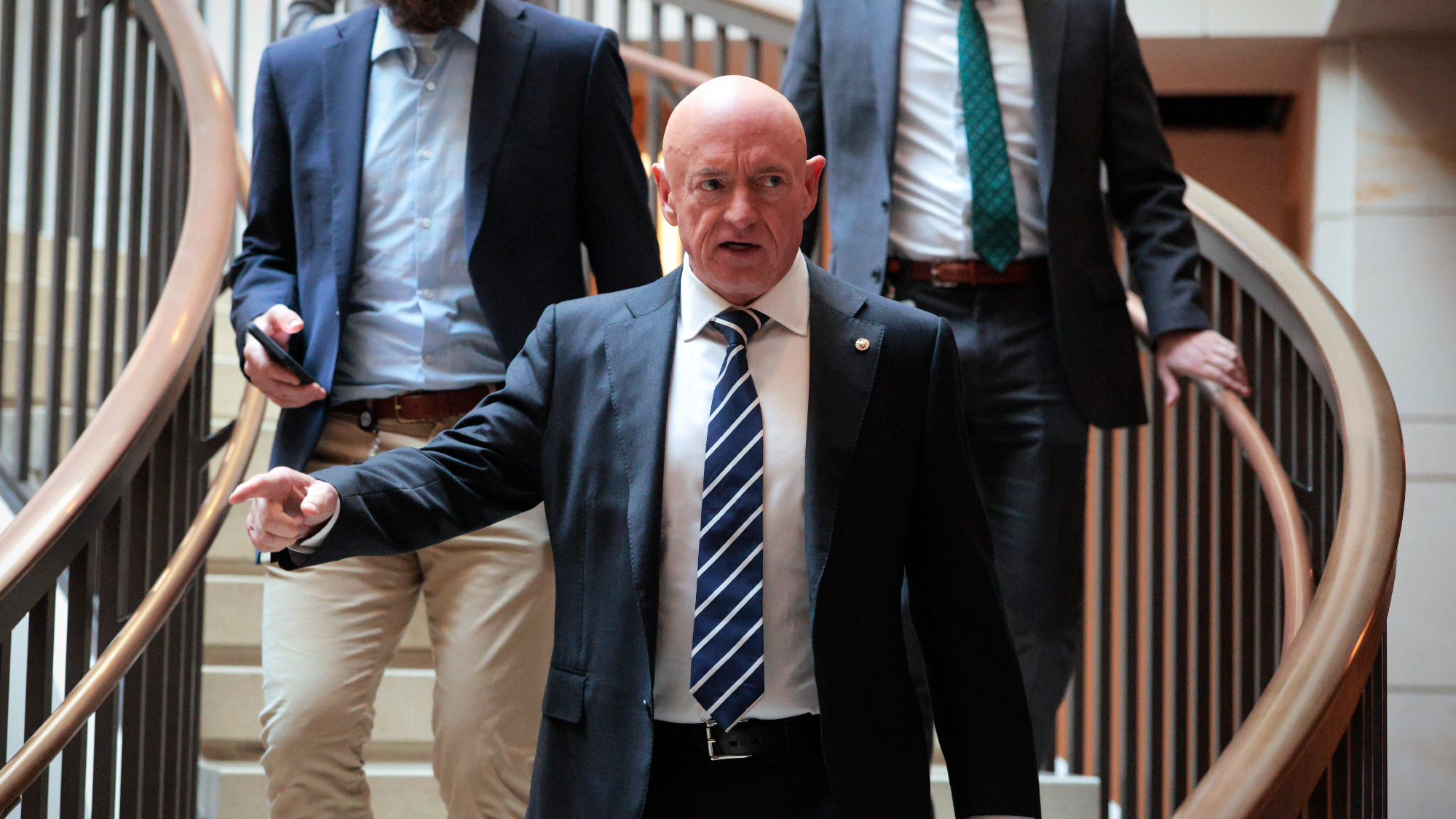Why Democrats should be cautious about public banking
It has its merits, but it's not a cure-all

Earlier this month, California passed a bill allowing 10 city governments in the state to establish a public bank. It's only the second state in the U.S. to take the leap — North Dakota has had a public bank for a century — but other states are dabbling in the idea.
In the aftermath of the 2008 financial collapse, when the privately-owned banks of Wall Street are as bloated and vulnerable to crisis as ever, public banking seems like an idea whose time has come: It's being proposed for everything from ending the financial exploitation of low-income Americans to providing the financial engine of a Green New Deal.
But what do public banks get us that private banks don't? If public banking is a tool, what problems is it best at solving? And is it a solution for tackling some of our biggest challenges?
The Week
Escape your echo chamber. Get the facts behind the news, plus analysis from multiple perspectives.

Sign up for The Week's Free Newsletters
From our morning news briefing to a weekly Good News Newsletter, get the best of The Week delivered directly to your inbox.
From our morning news briefing to a weekly Good News Newsletter, get the best of The Week delivered directly to your inbox.
A private bank gets its startup capital from private investors. They run the bank's governance, and they receive the bank's profits. By contrast, a public bank gets its startup capital from the tax revenue of whatever state or local government creates it. The public bank is answerable to that government, and whatever profits the bank makes are returned to that government. Currently, state and local governments sock away most of their tax revenue — just over $500 billion of it — away in private banks. So the general idea for starting up a public banking system then is for those governments to transfer those funds to the public banks they create to get them off the ground.
This financing, in turn, creates a major difference in the incentives that drive how a public bank operates.
Under capitalism, the basic purpose of using loans to finance economic activity is that it's a way to judge the worth of different economic projects. Every investment is an experiment and a risk. Since loans have to be paid back, the bank (public or private) must think hard about what experiments it wants to risk financing — because if the experiment fails, the bank may fail with it.
With a public bank, the need to think hard is still there, but the need to not only break even but return as big a profit as possible is lessened. Public banking creates some freedom from the overwhelming private drive for profit, allowing democratically chosen priorities — such as social justice, poverty alleviation, carbon reduction, environmental cleanup, or industrial policy — to play a bigger role in who receives loans.
A free daily email with the biggest news stories of the day – and the best features from TheWeek.com
Both private and public banks operate in the same way, by "multiplying" their reserves through the creation of loans. Thus public banking is a way for state and local governments to get more bang out of each buck of tax revenue, by using that revenue to finance further loans to projects in the public interest. For skittish politicians, public banks are also attractive because the loans technically aren't spending that gets counted on the government's budget; they're a roundabout way to "spend" on public priorities without the government having to increase taxes or borrowing accordingly.
The downside is that private and public banks both go bust in the same way as well: By making a bunch of bad loans whose returns don't pan out, leaving the bank overextended, and draining all its reserves and capital away. Public banking, then, does put taxpayer funds at risk. (Of course, they're at risk in the private banking sector as well.)
We can derive a few rules of thumb from all this.
First off, public banks almost certainly would be an effective system for providing basic banking services and small-scale loans to low-income Americans. Since public banks aren't subject to the same requirements of profit-making, they could charge minimal fees and interest. They could replace the current exploitative hodgepodge of payday lenders and other financial services that charge vulnerable customers an arm and a leg for basic credit and financial transactions.
Secondly, public banks are most useful for state and local governments, which are cash constrained and can actually run out of money. The federal government could technically create a public bank as well — we've seen plenty of talk from national policymakers about an infrastructure bank, for instance. But the federal government has the unique power to create limitless U.S. dollars, which makes a public bank much less necessary. (Ultimately, the Federal Reserve — the U.S. central bank — is an extension of this power, and is unlike private banks or state and local public banks, in that it's literally impossible for the Fed to go bankrupt.)
It probably also makes the most sense for public banks to be run at the state and local level, since their best use is for discreet projects and local investments: A downtown that needs renovation, a factory that's looking to upgrade, a port that needs upkeep. These are experiments that are likely to provide a return and are in the public interest, but that private banks and investors might pass over because the profit potential isn't up to their standards.
At the same time, plenty of causes in U.S. society are worth financing without placing the burden of paying back the loan on the recipient. The $1.5 trillion student loan crisis is a prime example of everything that can go wrong when we try to provide a universally needed public good (education, in this case) with a financial instrument designed for investing in specific experiments and risk-taking innovations.
Similarly, when it comes to zeroing out America's carbon emissions, there are isolated places where public bank lending could be useful — with, say, helping individual steelmaking plants shift to electric arc furnaces. But big ticket items like building out the country's wind and solar power, updating the national grid, or retrofitting homes and buildings are not discreet experiments — those are efforts to reorient the entire framework of the economy towards ecological sustainability. The same would go for an effort to refurbish the country's entire infrastructure stock, or build a national public transit system. Both efforts are aimed at remaking the fabric of the whole economy, rather than building a more productive or profitable mousetrap in the context of the economy as it already exists.
Such projects need to be done whether they generate a return or not. Thus, those goals would be better addressed through straightforward federal spending.
Public banks could be extraordinarily useful tools for local and state governments, and can address myriad challenges. But they aren't well suited to every problem, and they certainly shouldn't be a way for politicians to boast that they kept budgets in check. Sometimes, old-fashioned government spending is the only way to go.
Want more essential commentary and analysis like this delivered straight to your inbox? Sign up for The Week's "Today's best articles" newsletter here.
Jeff Spross was the economics and business correspondent at TheWeek.com. He was previously a reporter at ThinkProgress.
-
 ‘If regulators nix the rail merger, supply chain inefficiency will persist’
‘If regulators nix the rail merger, supply chain inefficiency will persist’Instant Opinion Opinion, comment and editorials of the day
-
 Trump HHS slashes advised child vaccinations
Trump HHS slashes advised child vaccinationsSpeed Read In a widely condemned move, the CDC will now recommend that children get vaccinated against 11 communicable diseases, not 17
-
 Hegseth moves to demote Sen. Kelly over video
Hegseth moves to demote Sen. Kelly over videospeed read Retired Navy fighter pilot Mark Kelly appeared in a video reminding military service members that they can ‘refuse illegal orders’
-
 Bari Weiss’ ‘60 Minutes’ scandal is about more than one report
Bari Weiss’ ‘60 Minutes’ scandal is about more than one reportIN THE SPOTLIGHT By blocking an approved segment on a controversial prison holding US deportees in El Salvador, the editor-in-chief of CBS News has become the main story
-
 Has Zohran Mamdani shown the Democrats how to win again?
Has Zohran Mamdani shown the Democrats how to win again?Today’s Big Question New York City mayoral election touted as victory for left-wing populists but moderate centrist wins elsewhere present more complex path for Democratic Party
-
 Millions turn out for anti-Trump ‘No Kings’ rallies
Millions turn out for anti-Trump ‘No Kings’ ralliesSpeed Read An estimated 7 million people participated, 2 million more than at the first ‘No Kings’ protest in June
-
 Ghislaine Maxwell: angling for a Trump pardon
Ghislaine Maxwell: angling for a Trump pardonTalking Point Convicted sex trafficker's testimony could shed new light on president's links to Jeffrey Epstein
-
 The last words and final moments of 40 presidents
The last words and final moments of 40 presidentsThe Explainer Some are eloquent quotes worthy of the holders of the highest office in the nation, and others... aren't
-
 The JFK files: the truth at last?
The JFK files: the truth at last?In The Spotlight More than 64,000 previously classified documents relating the 1963 assassination of John F. Kennedy have been released by the Trump administration
-
 'Seriously, not literally': how should the world take Donald Trump?
'Seriously, not literally': how should the world take Donald Trump?Today's big question White House rhetoric and reality look likely to become increasingly blurred
-
 Will Trump's 'madman' strategy pay off?
Will Trump's 'madman' strategy pay off?Today's Big Question Incoming US president likes to seem unpredictable but, this time round, world leaders could be wise to his playbook
